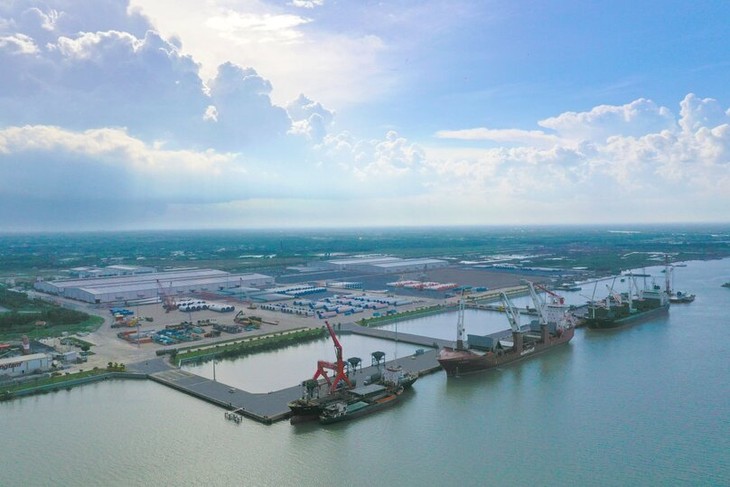(VOVWORLD) - The Mekong River Delta – Vietnam’s key economic hub - provides 90% of the country’s export rice, 70% of its fruit, and 65% of its aquatic products. With 15,000 km of waterways, the region’s logistics system remains inadequate. Connecting modes of transport is the ideal way for the Mekong Delta region to develop more strongly and overcome the delay of goods and high costs of shipping.
 The Mekong River Delta’s logistics system remains inadequate though the region has 15,000 km of waterways. (Photo: VOV) The Mekong River Delta’s logistics system remains inadequate though the region has 15,000 km of waterways. (Photo: VOV) |
Vo Quan Huy, Director of the Huy Long An Company specializing in farm produce export in Long An province, is worried about logistics costs. The company has more than 500 hectares of bananas for export to Japan, South Korea, and China.
Huy said logistics costs account for about 30% of post-harvest expenses. Last year, for example, it cost him 2,000 USD for one container. The figure now has tripled to 7,000 USD.
“Logistics costs have increased too much and farmers producing agricultural products are most pressured. My business is comprised of production and trading in which production suffers the most. The Government needs to pay attention to the planning, call for investment in seaports and logistics, and work with shipping lines to address these issues,” said Huy.
Annual statistics show that more than 70% of goods from the Mekong Delta for export are transported by road, mainly to the ports in Ho Chi Minh City and Ba Ria-Vung Tau.
In recent years, road infrastructure, a major obstacle for the region’s development, has received much investment from the central Government. Inland waterway transport plays a key role, but due to serious lack of investment, its main function is to gather goods on a very limited scale.
Many economists have forecast that the region’s growth rate of freight transport by 2030 will be between 5.7 and 7.7% annually while the passenger transport will grow 5.7% to 7% by 2030.
Nguyen Phuong Lam, Director of the Can Tho Federation of Commerce and Industry, underscored the need to have comprehensive and breakthrough solutions for long-term development.
Lam said, “As the demand for food grows, the demand for transporting goods will increase, particularly in the context of the full enforcement of the trade agreements that Vietnam has signed. This creates greater pressure on transport, logistics and seaports.”
He said, “Due to the region’s poor transport infrastructure, few businesses have been interested in logistics. Though this is a disadvantage and limitation of the Mekong Delta, it offers a new opportunity for the logistics industry.”
To meet the expansion of the import-export market, the Mekong Delta region needs to expand the logistics industry to offer services in transportation, warehousing, storage, and value-added services (cold storage, irradiation and steaming services for fruit products) to ensure the quality for exports and distribution for domestic consumption.
Ho Thi Thu Hoa, head of the Vietnam Logistics Research and Development Institute, said Mekong Delta localities, especially Can Tho province, should be more determined in establishing a regional logistics center.
More research should be done to evaluate the region’s demand for logistics for each type of goods in order to build a logistics center.
According to Hoa, it’s also necessary to develop the infrastructure of warehouse centers, services, and human resources.
She also recommended agricultural and seafood exporters pay attention to logistics service options to reduce production costs and improve production efficiency. Logistics service providers are advised to link with each other to set up a chain in the Mekong Delta.
“State management agencies need to pay attention to the planning of the logistics infrastructure network including hard and soft infrastructure, which refers to ICT and human resources. Focus should be placed on aviation infrastructure which can help export the region’s products directly. The connection of infrastructure, human resources and localities is needed to serve the export of local agricultural products,” said Hoa.